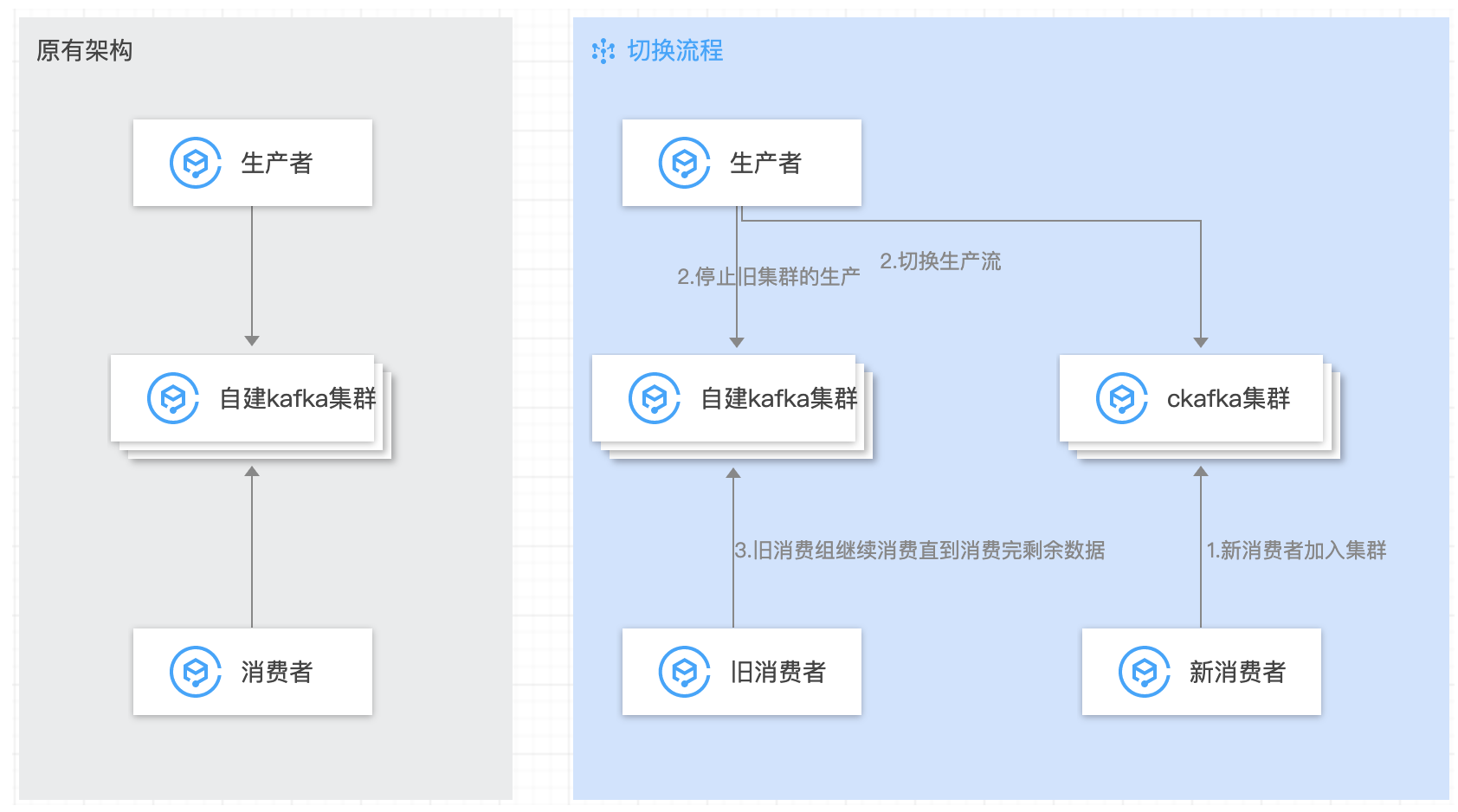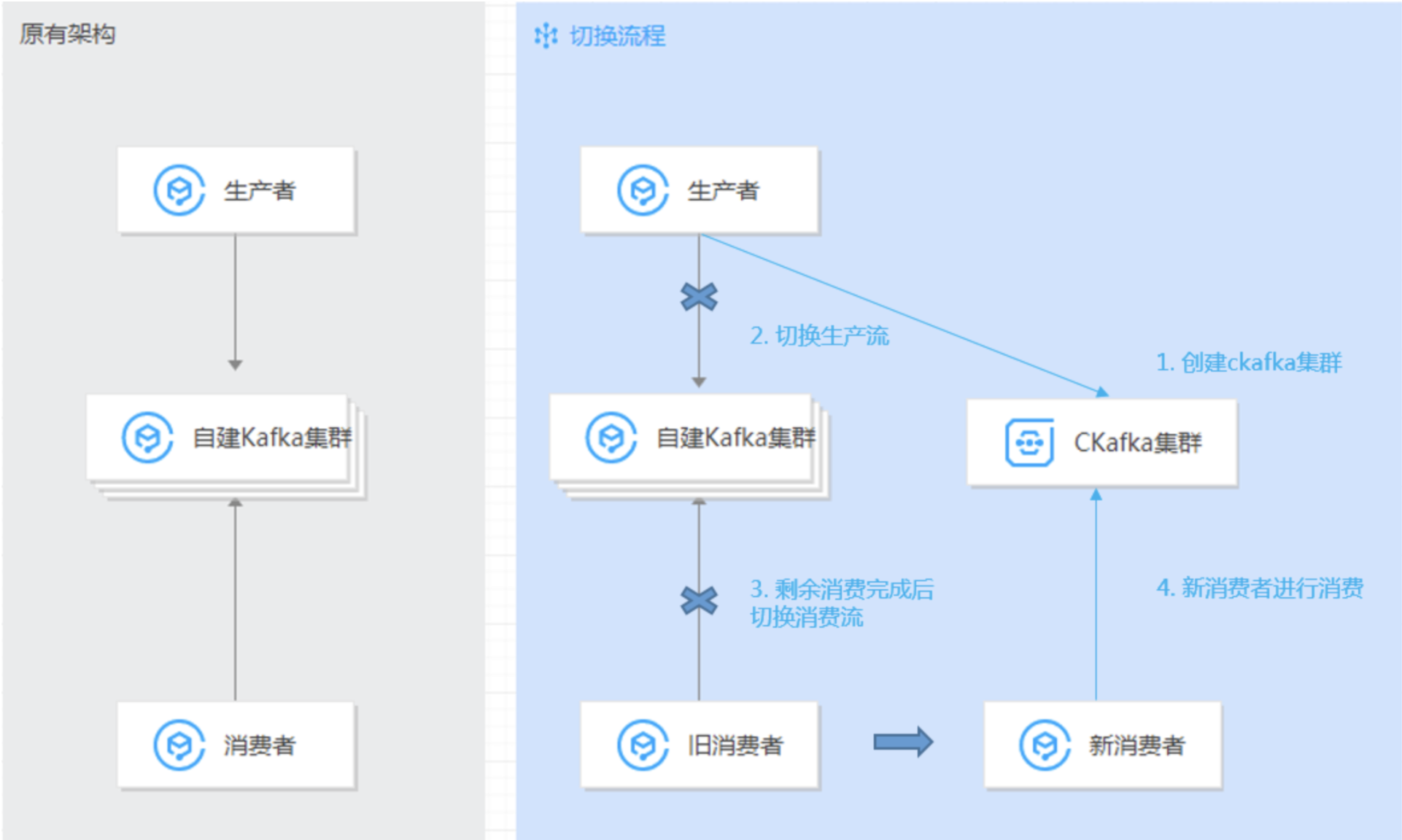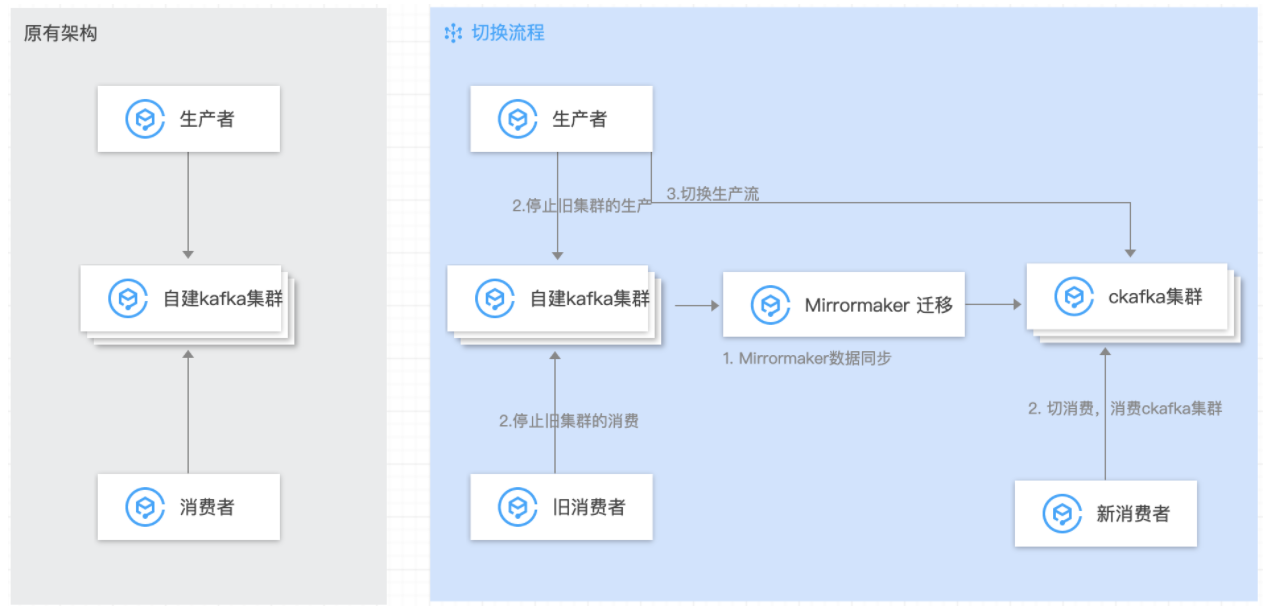迁移方案概述
最后更新时间:2025-09-29 15:39:21
迁移方案概述
最后更新时间: 2025-09-29 15:39:21
操作场景
本文介绍将自建/其他云厂商的 Kafka 集群迁移到腾讯云 CKafka 集群的可行方案,您可以根据自身业务场景选择合适您的迁移方案。
目前主要提供两种迁移方案:
1. 使用连接器:使用 CKafka 提供的连接器功能实现迁移,支持云上、云下(跨云、混合云)等多种场景,具体介绍请参考配置 Kafka 之间的数据同步。
2. 使用开源工具:使用开源工具完成迁移,下文将重点介绍此方案的具体操作步骤。
开源工具迁移方案说明
方案1:单写双消费
该方案的整体简单清晰便于操作,且无数据积压,过渡平滑。

方案思路:
1. 完成 Topic 元数据的迁移。
2. 自建 Kafka 集群中原有的消费者保持不动。
3. CKafka 消费端新起消费者,配置新的 CKafka 集群的 bootstrap-server,消费新的 CKafka 集群。
4. 等待所有消费端都已经监听了新的 CKafka 集群。
5. 将自建集群的生产切到 CKafka 新集群上(配置新的 CKafka 集群的 bootstrap-server)。
6. 自建 Kafka 集群中原有的消费者继续消费自建 Kafka 集群中剩余的数据,直到消费干净后方可下线原消费者。
方案优劣:
优点:整体迁移流程简单清晰便于操作,无数据积压,平滑过渡。
缺点:需要额外多起一套消费者。
方案2:单写单消费
该方案的整体简单清晰便于操作。

方案思路:
1. 完成 Topic 元数据的迁移。
2. 将自建 Kafka 集群的生产切到 CKafka 新集群上 (配置新的 CKafka 集群的 bootstrap-server)。
3. 等待自建集群中的消费者消费完剩余数据。
4. 将老的消费者切到 CKafka 新集群消费(配置新的 CKafka 集群的 bootstrap-server)。
方案优劣:
优点:整体迁移流程简单清晰便于操作,过渡平滑。
缺点:在生产切到 CKafka 集群后,旧消费切到 CKafka 集群之前, CKafka 集群会存在一定量的堆积。
方案3:Mirrormaker 迁移
该方案会把自建集群 Kafka 中的存量数据迁移到 CKafka。

方案思路:
1. 完成 Topic 元数据的迁移。
2. 自建 Kafka 集群中原有的消费者保持不动。
3. 启动 Mirrormaker 工具的数据同步功能。
4. 等待数据同步完成,修改消费者配置并切换消费者。
5. 等待数据同步完成,修改生产者配置并切换生产者。
6. 迁移完成。
方案优劣:
优点:整体迁移流程简单清晰便于操作、可以把历史数据同步到 CKafka 集群。
缺点:消费者切换到目的集群上需要从头开始消费,需要做好消费幂等。
文档反馈
